- Administrator
- Albums and Singles
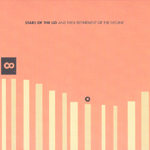 "Dungtitled (in A major)" seems an irreverent title, but announces sonically Brian McBride's and Adam Wiltzie's most doggedly serious recording to date. Compared to The Tired Sounds of... the music on And Their Refinement of the Decline is more direct, relying less on minutiae and emphasizing the power of their music as cleansing and consumptive.
"Dungtitled (in A major)" seems an irreverent title, but announces sonically Brian McBride's and Adam Wiltzie's most doggedly serious recording to date. Compared to The Tired Sounds of... the music on And Their Refinement of the Decline is more direct, relying less on minutiae and emphasizing the power of their music as cleansing and consumptive.
Kranky
Stars of the Lid have not changed their approach radically. Their music is the same patient and haunting event it has been since Music for Nitrous Oxide was released over ten years ago. It would be tempting to say their music has become more sophisticated or careful, but neither seems absolutely true in the sense that the band has stayed true to an ambiguous ethos marked by careful progression and an emphasis on the subtle. If anything, they have provided different perspectives on the same idea, continually extracting new sounds and points of view from that constant and familiar ethos. With that in mind Stars of the Lid begin their new record on an austere note, the tone of the record sounding immediately funeral. The timbre of their chosen instruments is wooden and deeply resonant, sounding like the announcement of some grave event. The mood doesn't last long, however, as the music evolves into a less severe progression of long, almost royal horn performances and keyboard drones. It's as though the band is passing from the atmospheric tendencies and dark themes of past albums and into new territory, but without eschewing that important facet of their tenor. More simply, Stars of the Lid appear to be thinking about their own sound more than ever and, instead of radical change, they've opted to shift the focus of their music as carefully and slowly as the chords of their songs change over time.
Typically the music could be called meditative: the effect their music elicits is calming and often hypnotic. To focus on that aspect disproportionately would deny the immediacy and power of their slowly and softly evolving sounds, though, and would miss part of what makes the music so beautiful. In turns the songs on this album ask the listener to either relax and be submerged into the loud, deep tones of the horns, strings, and voices or to sit up and pay attention. In the latter case it isn't so much that the music asks anything, it outright demands and urges an immediate response, as on "Articulate Silences Part 2." The development of the song lends itself to the shock of introduction, of unexpected new qualities. I know Stars of the Lid are often referred to as soporific, but casual listening to this record does not stay casual for long. Even as many of the arrangements develop in simple wave-like forms, the addition or subtraction of elements in each waves reveals new layers that further the involvement of the audience. This has, to some extent, always been true of their music: it never seems entirely appropriate to treat their music passively. This record seems more firm, however, more wholly unified in its purpose and performance.
The first disc ends with a song called "A Meaningful Moment Through A Meaning(Less) Process." After nearly one hour of music, this particular piece comes as a surprise both in title and in essence. The piano that leads the song into its brief duration stands out among the various solo instruments that populate the first disc. It is bright, repetitive, obviously treated, and absolutely distinct from the other aspects of the song. The emotional impact it leaves is stupendous, which brings me to the title itself. I'm not sure how reflective it is supposed to be of the band or the way they think of their music; after all, they have included a piece called "That Finger On Your Temple Is the Barrel of My Raygun" on this album, on the same disc that ends with "December Hunting for Vegetarian Fuckface." The title speaks to something concerning this band's music that goes beyond the silliness they might've afforded themselves with names this time around. Stars of the Lid tug at the heart strings more so than they stimulate some academic approach to minimal music or experimental composition. Each note, each aspect of their music from the kinds of instruments they use to the decisions they make concerning arrangement and mixing, somehow draws powerful responses out of me, though any of the single notes they produce or even whole phrases alone do not necessarily lead me beyond those very notes, seemingly empty of content. Their talent for drawing human qualities of what might be termed essentially un-human processes is impressive, both for its impact and for the consistency of that fact. That spilling over of emotional content requires the listener, though: this is not background music, it's far more exciting than that.
samples:
- Articulate Silences Part 2
- Dopamine Clouds Over Craven Cottage
- That Finger On Your Temple Is the Barrel of My Raygun
Read More
- Administrator
- Albums and Singles
Goodbye Marks His First New Material For Domino
Ulrich Schnauss' third album, Goodbye, is his first new release for Domino on July 10th. The album is the end of a chapter in his sound. "I see these three albums as moving closer to something I wanted to do right from the beginning but didn't quite manage," he says. "Merging songwriting and indie elements with electronic music. I've tried to take all the ideas to the maximum."
The ambient tracks are more spacious, the songs more memorable, the multi-layered, guitar-heavy tracks more ragingly psychedelic. Just listen to the obliterating rush of "Medusa," or the cloudbusting dream-pop of "Stars" (performed with long-time collaborator Judith Beck). At times, there are over 100 different audio tracks playing simultaneously: a tower of song. No wonder Goodbye has taken three solid years of in the studio.
After a few years of watered down, pseudonymous productions which he'd rather you didn't seek out, Ulrich released Far Away Trains Passing By. He was amazed they even wanted to release it; more amazed still when it became a cult success. Its more rock-influenced successor, A Strangely Isolated Place, received an even warmer response, from critics and other musicians alike. It led to Ulrich remixing some of his shoegazing heroes (Neil Halstead and Rachel Goswell of Slowdive, and Mark Gardener of Ride), as well as Depeche Mode, Justin Robertson, Lunz (Hans-Joachim Roedelius), and Longview.
Tired of the Berlin scene, Ulrich moved back to his hometown of Kiel to make Goodbye. Most of his schoolfriends had moved away, so he didn't have to worry about distractions. His last two album titles spoke of isolation, but was that the pain of enforced loneliness or the comfort of voluntary solitude. Goodbye is equally ambivalent. "Emotionally, I find farewell situations interesting," he says. "Saying goodbye can be tragic or hopeful."
Preceding Goobdye comes the Quicksand Memory EP announcing the return of Ulrich Schnauss. The EP features an edit of the stunning "Medusa" from Goodbye, a collaboration with Rob McVey (Long-view) titled "Look At The Sky" and Robin Guthrie (Cocteau Twins) re-workings of two of Ulrich's most celebrated songs from A Strangely Isolated Place, "Gone Forever" and "On My Own".
Tracklist:
1. never be the same
2. shine
3. stars
4. einfeld
5. in between the years
6. here today, gone tomorrow
7. a song about hope
8. medusa
9. goodbye
10. for good
Read More
- Komal Trivedi
- Albums and Singles
The tracks are heavily influenced by 'Western' popular music of the time, from the swinging '60s to Rock 'n Roll to Funk, but throughout, is the distinct South Asian musical influence—whether it's the vocals of the Indian Elvis Kishore Kumar or the unmistakable sounds of those Bollywood orchestral violin pieces. What makes this compilation so special is that it echeos an attitude and style of Indian cinema and popular culture that is just not found in today's Bollywood. This is Bollywood filmi, hip thrusting, breast pulsating at its best. In fact I was surprised at just how funky Bollywood music was during this era.
This compilation also truly showcases the very far-reaching global musical influences of Bollywood film music, something which the industry still appears to try to do today but without the same affect. Influences from various countries find their way into each track while tunes from here continue to have effects on current music. There's a decidedly fantastic Russian influence in Lata Mangeshkar & Manna Dey's "1956, 1957, 1958" from the film Anari while the compilation's opener, "Mera Naam Hai Shabnam," is a fine tongue-in-check naughty track that's been used recently in blackMahal's fabulous "Save The Flavour." The cross-culturalization is wonderful and inspiring, as I'm more curious now to watch these films if only to help place the countries!
Read More
- Administrator
- Albums and Singles
 For anyone who has spent any serious amount of time listening to the leftfield of electronica over the past three or four years, it's hard to imagine someone reinventing the proverbial wheel. I know the more I listen to new and "underground" electronica, the more I keep hearing the same things over and over. Phat beats make for a great 12" or live set but an album needs more. Nebulo gives a lot more. On Kolia, through atmospherics and melody, Nebulo has made the best electronica album I've heard since Ellen Allien's Berlinette.
For anyone who has spent any serious amount of time listening to the leftfield of electronica over the past three or four years, it's hard to imagine someone reinventing the proverbial wheel. I know the more I listen to new and "underground" electronica, the more I keep hearing the same things over and over. Phat beats make for a great 12" or live set but an album needs more. Nebulo gives a lot more. On Kolia, through atmospherics and melody, Nebulo has made the best electronica album I've heard since Ellen Allien's Berlinette.
Hymen
My first chance to explore this album was commuting to work, faring 5:00 rush hour traffic on the highway in a snow storm. I got blown away by how the first four songs worked as a perfect soundtrack to the snowy evening. As the highway winded down behind the main road of my hometown, snow is flying lightly through the air, swirling golden in the headlights of the cars in my rearview mirror and street lamps breaking through the line of buildngs between the highway and the town. Temporal and delicate spider webs float above the pavement, get briefly illuminated, then crushed and dispersed just as quickly under the wheels of traffic.
The opener, "Ant," skitters and plays along with this frail, winter beauty. The melodies, chopped and cut synthesizer strings and high pitched whines of feedback, wind around the rhythms the way traffic weaves in an out of itself, all the while, weaving and cutting a fine lace of fresh snow. "Automna" moves into much the same head space, a delicate air, heavy eith beats, pounding, chopped and syncopated. A toy-piano-like melody is countered with harsh orchestra samples and well controlled feedback. It raises my heartbeat, in joyous, romantic tension. The next two tracks flow through the same space, countering delicate, alien melodies with unexpected and dynamic rhythms. "Darkopale" darkly closes the opening passage. It is slow moving, and eery. Reminiscent of Datachi’s work.
Kolia lulls a bit after this exciting opening. The following songs, "Wen" and "Reverse," make a clear cut in the album's flow, like a change to the next movement of a symphony. "Wen," the longest song on the disc at almost seven minutes is just a little too long winded. It's the least dynamic piece, as well as the mellowest. "Reverse," a two-minute ambient interlude, feels like a little too much after "Wen," but a rest after the tension and release of the opening puts me in a place to think about how powerful and beautiful what was just experienced.
The pace of the latter half of the album isn't quite as intense as the opening, but wanders back and forth between dynamic rhythm-driven tracks and ambient passages. "Klik Me," "Nebula," "Siapese," and "Nokta" are less visceral and more heady than the first four tracks. The closing tracks feel more like exercises in cinematic tension than just iPod-oriented ear candy. As emotionally gripping as the opening tracks are, the ending of the CD shows Nebulo as a true composer, not just some jerk with a laptop and a lot of free time. He caught me right off with some flash and showy tricks, just enought to get me to stick around for the second half to really see what he's capable of.
The two remixes at the end work well in the flow of the album. Of the two, Ginormous' remix of "Darkopale" is a beautiful rendering, capturing all the beauty and redirecting the energy and tension tino a cliffhanger end for the disc.
I appreciate the way Nebulo balances Kolia into three solid movements. The strength and breadth of style and composition will surely make this disc hold up over time. Kolia is tense and dynamic, but not uni-directionally, there's release and victory. Any of these songs could be used for a film soundtrack but this album is lushly layered and dynamic. It creates images and ideas in my head rather than just allusions to some veiled nostalgia, not just to be an edgy backdrop for an automible or life insurance commercial.
samples:
Read More
- Administrator
- Albums and Singles
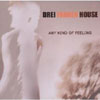 After Unai's substandard A Love Moderne made for an inauspicious resurrection for Force Tracks, this full-length from a netlabel favorite picks up the gauntlet previously held by Dub Taylor and M.R.I. Still, it isn't quite enough to bolster the once unassailable tech-house imprint.
After Unai's substandard A Love Moderne made for an inauspicious resurrection for Force Tracks, this full-length from a netlabel favorite picks up the gauntlet previously held by Dub Taylor and M.R.I. Still, it isn't quite enough to bolster the once unassailable tech-house imprint.
Drei Farben House's Michael Siegle has some big shoes to fill releasing his debut album with a label known for producing some of the vanguard acts of minimal house's early naughties heyday. The deep and abstractly funky sound that Force Tracks made its name on has become less relevant since its tragic disappearance, though its influence can still be heard in the clubs today. The faction of electronic music fans still very much enamored of those dubby days will likely find something to enjoy on Any Kind Of Feeling, as several of them have likely discovered the artist’s Fashion and Stadtarchiv, two impressive MP3-only releases from the respected Corporate Identity netlabel. Based on that material, this proper debut album offers little in the way of surprises, though plenty of satisfying grooves.
After the chilled out introduction "Humidity," a filtered rhythm initiates "Unprivate" before its bare bones beat makes way for a bouncy bass pattern and snippets of Luomo-esque male vocal. Whereas labelmate Unai's voice came across as strained and paper-thin, Siegle's has the intentionally disinterested inflection of some of the more subdued characters of the new wave generation. Taking that into consideration, Drei Farben House fits far better within the Force Tracks legacy. In fact, the first handful of tunes seems almost dated, only somewhat problematic given the aforementioned market. Fortunately, "It Matters To Me" breaks this trend and offers a significant progressive push towards the dancefloor, with bold stabs and a jacking almost authentic bassline. Here, Siegle finally reveals a rare lyrical song instead of a track, and the results are more than sufficient due to a desirable apathetic delivery and foreign inflection.
Also released as a vinyl-only single, instrumental "Close Enough" flaunts an affinity for house music’s roots with its shimmering disco flourishes and evolving melodies. "Collection for Thierry" and "Rain Cycling" dabble in carefree synthpop, with Siegle uncharacteristically emoting like some 80s frontman stunted somewhat by the fact that he’s working with such a limited and limiting loop-based palette. "So Familiar" closes out this album ecstatically, channeling euphoric druggy highs in its synthetic depths. The swirling pad that serves as its base eventually gives way for another appropriately distant and brief vocal, recalling countless nights spent sweating away all the pressures of the real world. While neither life-changing nor revolutionary, Any Kind Of Feeling comprises passable tunes for house heads and the lounge set, making it inessential yet nonetheless diverting.
samples:
Read More
- Administrator
- Albums and Singles
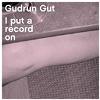 Despite (or perhaps because of) a 25 year long career playing with Einstürzende Neubauten, Mania D and Malaria! as well as running a successful record label, she has never put out her own album. I Put a Record On is a far cry from her previous work with the other groups: it captures the modern Berlin's new slick, chic culture as opposed to the decay and geographical isolation that gave birth to the Neue Deutsche Welle.
Despite (or perhaps because of) a 25 year long career playing with Einstürzende Neubauten, Mania D and Malaria! as well as running a successful record label, she has never put out her own album. I Put a Record On is a far cry from her previous work with the other groups: it captures the modern Berlin's new slick, chic culture as opposed to the decay and geographical isolation that gave birth to the Neue Deutsche Welle.
Monika Enterprise
I was expecting I Put a Record On to be more upbeat and clubby, instead Gut has gone for a more laid back approach and released an album that Portishead might make if they were Berliners. I get the feeling that Gut was aiming to create an album that could be used to soothe ringing ears after a hard night out. The beats are simple: strong enough to get a body moving in sync but soft enough to prevent full on dancing. The pulse of Berlin's night life is detectable on the first few songs, especially the terrific track "The Land," but the night quickly swallows up the life as the album gets sleepier and sleepier. Gut's vocals are hushed and nearly always tweaked with effects. At first I thought she was trying to hide her singing but on closer inspection I think the effects are more for smoky ambience. The way the album winds down is relaxing, by the end of the disc I am ready to curl up and sleep (and not out of boredom).
The best songs occur towards the end of the album when Manon P. Duursma, one of Gut's old bandmates from Malaria!, contributes to the music (although little traces of Malaria! are present). "Pleasuretrain" and "The Wheel" are both great tracks, the latter captures the sound and feeling of being in a nightclub under tropical waters that Gut strove to create with her Ocean Club project. The discs that resulted from that project (Members of the Ocean Club) is quite similar in tone to this album. However, instead of the late evening, early night buzz of the Ocean Club, I Put a Record On is a collection of songs for that late night, early morning come-down.
While I Put a Record On is not as innovative or groundbreaking as some of Gut's earlier endeavours, it is still a good record. It does something that many albums do not do and that is capturing the feeling of a city accurately and vividly. Looking at the sleeve and listening to I Put a Record On immediately makes me think of strolling through Mitte on a late summer evening. Maybe it is my soft spot for Berlin coloring my view of this album but I cannot help but be impressed by Gut's elegant and charming songs.
samples:
Read More
- Administrator
- Albums and Singles
 A stylistic mish-mash of styles, cultures, and sounds, Radio Zumbido create the perfect documentary soundtrack for a film that does not exist. My first thought on a quick sampling of this disc was old Bomb Squad era Public Enemy.
A stylistic mish-mash of styles, cultures, and sounds, Radio Zumbido create the perfect documentary soundtrack for a film that does not exist. My first thought on a quick sampling of this disc was old Bomb Squad era Public Enemy.
Not there was a real similarity in content or attitude with the Bomb Squad, but the dense fog of samples and loops are nearly impossible to isolate yet coalesce together into a compelling mix. Radio Zumbido is Juan Carlos Barrios (and in this case, "and friends"), who consciously avoided samplers in favor of analog tape loops, keyboards, guitars and percussion (all played by Barrios). It's surely this approach that leads to the human, organic feeling that pervades the album. There was an intent to be "lo-fi" and it works very well.
While in some ways this could be considered "world music" it lacks the distinct cultural exploitation often inherent in that genre. Instead of simply loading up on native instruments and foreign language vocals, the album instead allows those elements of the surrounding culture to seep into the mix while still maintaining its own edge and style. Recorded at various times in Barcelona and Los Angeles, the sounds of the surrounding Latin culture permeate the album, but it never feels insincere. In some ways parallels could be drawn stylistically to Beck's Guero album, but in this case the Latin elements are far more natural and less forced.
The album is all over the board in regard to style and genre, from the massive hip hop drums and wah-wah’ed guitars on the opener "Revuelta" that wouldn't sound out of place on a Beastie Boys release to the minimal 8 bit melodies of "Tun," the disc manages to scurry across a little bit of everything yet still feels like a coherent body of work. In contrast to the more experimental type pieces, "Dolorcito" and "Radio Frontera" feature prominent guitar melodies with an Eagles/Southern California type twang mixed with some dubby percussion loops and effects.
There is a definite theatrical mood to the album, one of a documentary that instead of singling out a culture to study on its differences, it focuses more on the universal qualities that everyone shares, regardless of geography or ethnicity. While one can question if such a documentary could actually exist, at least we have the soundtrack to it.
samples:
Read More
- Administrator
- Albums and Singles
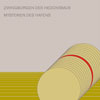 Die Stadt's reissue program of early Asmus Tietchens' early releases continues into its ninth iteration, this time focusing on two records from the late 1980s. Both differ greatly in their approach and are not equally compelling to these ears.
Die Stadt's reissue program of early Asmus Tietchens' early releases continues into its ninth iteration, this time focusing on two records from the late 1980s. Both differ greatly in their approach and are not equally compelling to these ears.
The disc is broken up into three long pieces, "Zwingburgen des Hedonismus," originally a one sided LP, is very cinematic, featuring early Fairlight sampling experiments focusing on piano and human voice along with sampled strings and wind instruments. It makes for an interesting experiment when placed in the context of its original release (as sampling technology was gaining a wider market), but beyond that it makes for little more than an interesting piece of soundtrack type music.
"Faircomp 1K" is an unreleased track of synthesized brass and string instruments that follow the same structure as "Zwingburgen des Hedonismus." Using a different pallet of sounds, this track calls to mind Carmine Coppolla's synthesized soundtrack to Apocalypse Now both in its analog electronic instrumentation, and sense of tension and fear present in the track. The composition works better when it is in this context as opposed to the sampled instrumentation in "Zwingburgen…"
The final track (two pieces combined) is 1988's "Bubendey Notturno/Ritual auf der Halde," originally appearing on a split record with Die Form entitled Mysterien Des Hafens. The split piece opens with a more traditional electronic synth sequence that continues to build as heavily reverbed and delayed synth lines weave in and around the mix. The last five minutes or so become extremely rhythmic, mimicking the 808 kick drum pulse of so many generic dance tracks, but here placed alongside a dense collage of synth lines that not clearly identifiable. This work feels very much in the vein of the early industrialists such as SPK and Cabaret Voltaire, and even some of the more obscure practitioners such as Maurizio Bianchi and Esplendor Geometrico.
Admittedly, the first track makes for a more interesting piece of experimentation rather than listening, as it does not really manage to keep the interest over time. The second track fares better, but the disc's real high point is the final track, a rhythmic industrial din in the classic sense.
samples:
Read More
- Administrator
- Albums and Singles
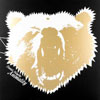 The mad man from the Pacific Northwest creates an album based solely on the sound of Native American percussion, with the processed results as wild as the roaring bear that adorns the album's sleeve.
The mad man from the Pacific Northwest creates an album based solely on the sound of Native American percussion, with the processed results as wild as the roaring bear that adorns the album's sleeve.
Daniel Menche has been involved in the experimental/noise scene for a number of years and still continues to change his style and approach, resulting in a massive body of work that never comes across as stagnant or dull. My previous exposure to his work has been of his more physical variety, being based on loops of contact mic'd metal percussion run through batteries of effects, and sound sourced from his own body. Hearing that this was a percussion centered album, I was curious as to how this instrument based approach would be, and I must say I'm quite thrilled.
The album opens with what amounts to raw percussion, no effects or anything, just the sound of the drum. The untreated percussion does not last, however, as Menche soon piles on the effects. The drum sounds are manipulated to resemble woodpeckers, gamelan percussion, etc. It is one of those albums that each listen brings a new revelation, a part of the track that wasn't heard the previous time that makes you wonder if that really is just the sound of a drum you're hearing.
You can hear a world of native percussion in Animality. Beyond the obvious Native American sounds, there is Indonesian gamelan, African ritual drums, Japanese Noh sounds, etc. It shows the universal and primitive animal nature of percussion. Although Menche is often associated with the so called "noise" scene, Animality never reaches the ear-shredding harshness associated with that genre, it has so much more depth than just shrill feedback and electronic roars. The sound of percussion from all over the world is on this album, even if it is just Mr. Menche, a drum, and a bank of effects. It's a brilliant disc right down the the excellent packaging: a cardstock folder that the CD "pops up" from upon opening. Both the label and Menche get high praise.
samples:
Read More
- Administrator
- Albums and Singles
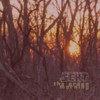 Inspired by a German audiobook of Ray Bradbury's The Martian Chronicles, the tracks on this album suitably evoke contact with distant landscapes that may or may not be inhabited. An eerie otherness pervades these songs, as if anxiously awaiting the arrival of alien emissaries.
Inspired by a German audiobook of Ray Bradbury's The Martian Chronicles, the tracks on this album suitably evoke contact with distant landscapes that may or may not be inhabited. An eerie otherness pervades these songs, as if anxiously awaiting the arrival of alien emissaries.
Although at first it may seem as if the drone-heavy songs on this album are fairly static, closer listening reveals turbulent nuances unfolding beneath the surface. In "Valles Marineris," it's as if some scientific reconnaissance device is transmitting data streams in the background, providing statistical information to complement the mixture of awe and unease. "Olympus Mons" contributes some light mechanical rhythms and a brief, repeating harmony before the ambient soundscape converges once again. The atmosphere builds throughout this track like a dense, aural fog in which shapes dart in the mist, just beyond reach.
A rhythmic pulse also infiltrates "Way in the Middle of the Air," but rhythm finally dominates in "Cydonia" with a loop that could have been created with battered rocks. As a counterpart, two alternating tones emerge to form a semblance of melody. The last track, "Chryse Planitia," is the most exhausting at nearly 20 minutes in length, but it also has the most rewarding complexity. Starting with a sort of sticky static, the familiar overtones appear but this time they're accompanied by a delicate mirage of shimmering microtones. A commanding machine-like swath overpowers the others, pulling the song toward a conclusion. There's quite a bit seething underneath the main sounds here that, as is the case with the other tracks, benefit by a bit of volume.
There's no such thing as static motion on this disc. Like the best ambient music, each track here constantly evolves, transporting us as far off-planet as they're willing to go.
samples:
Read More
- Administrator
- Albums and Singles
 Robert Horton weaves together drones, field recordings, improvisations on homemade instruments, and digital manipulations in the creation of this excellent, otherworldly recording. His explorations go in such a variety of directions and altered states that it is hard not to be a little awestruck in their wake.
Robert Horton weaves together drones, field recordings, improvisations on homemade instruments, and digital manipulations in the creation of this excellent, otherworldly recording. His explorations go in such a variety of directions and altered states that it is hard not to be a little awestruck in their wake.
The album opens with the incantation "Magus." Joining its harrowing drones are metallic strings and a horn, though the true source of the latter elements are little difficult to discern considering how frequently he creates his own instruments. After that attention-grabbing opening track, he takes it a step further with the trance-inducing "Long Period Event," a quasi-mystical devotional that inhabits its own reality altogether.
One of the things that Horton does well is the way he makes music from non-musical objects. He creates "Fire" from running a contact microphone over a wood stove while on "Musclefish" he plays with raw, uncooked noodles. Some of these tracks benefit from some digital manipulation afterwards, but the editing is so subtle that it leaves no obvious fingerprints. His own four-stringed invention, the boot, shows up on the harmonic-obsessed "What Is Left Unsaid," and the album's title track reveals his admiration for the slide guitar. Closing the disc is "Tuning Emperor Norton" in which Horton adds a khaen to the time-stretched drone of the orchestra tuning up for Gino Robair's opera about San Francisco's Emperor Norton.
This meditative piece is a fitting finale to a cycle of songs that continually venture into cathartic regions. Horton covers a lot of territory with this album, hazing it all with a gauze of glory and wonder.
samples:
Read More

